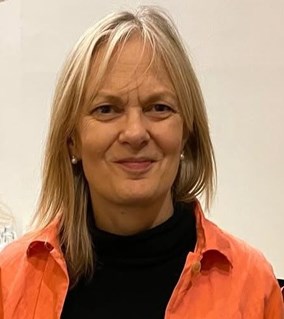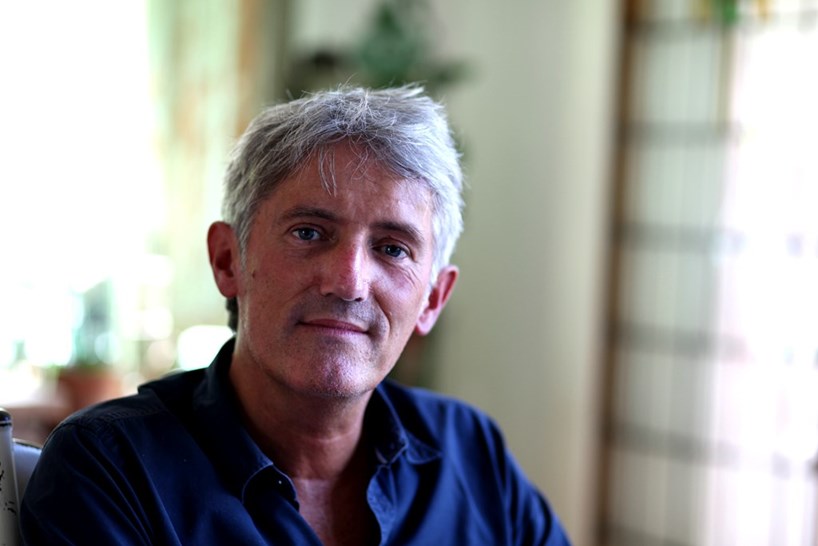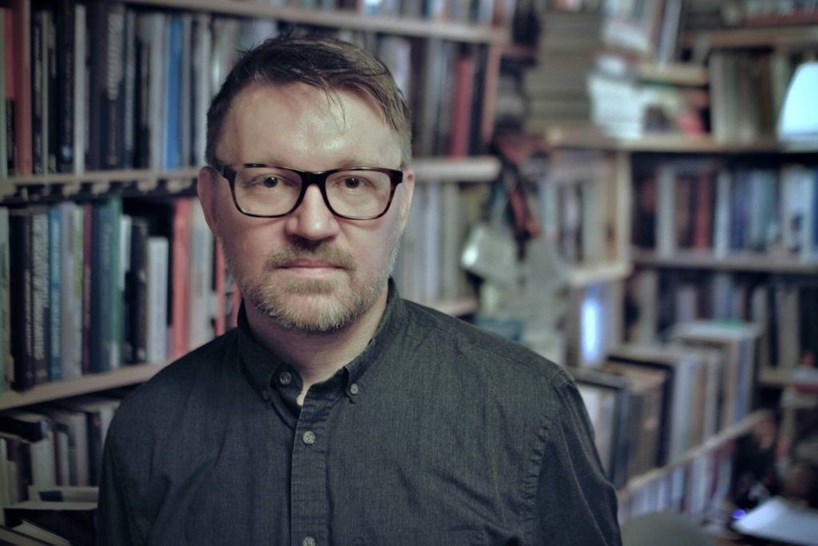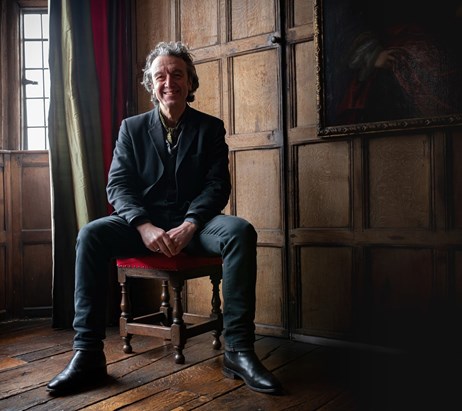IN 1984, the British theologian Lesslie Newbigin delivered his Warfield lectures at Princeton seminary, asking, “Can the West be converted?” “Wherever the culture of the West, under the name of ‘modernisation’, penetrates, it carries with it what Lippman called ‘the acids of modernity’, dissolving the most enduring of religious beliefs including the beliefs of Christians,” he observed.
Four decades later, it is a thesis that remains popular in the public imagination, and in academia, to some degree. In a recent talk for Humanists UK, David Voas, Emeritus Professor of Social Science in the UCL Social Research Institute, concluded that “religion is losing ground, society is being transformed, and the momentum appears to be unstoppable.” Given the strength of the correlation between a country’s position on the Human Development Index and levels of secularity, it was, he suggested, “pretty clear that things are not going to change”. Religion was “hard to acquire”, and adult conversions were few.
While not delivered in such bleak terms, the report on church attendance which Professor Voas delivered to Church House in the early days of the Renewal and Reform era (News, 17 January 2014), sought to deliver some hard truths. The decline in attendance was not simply a reflection of practical barriers, he suggested. “The reality that needs to be faced is that churchgoing is not a priority when Christianity is not a priority.” Religious belief and the importance that people attached to it, had declined “at least as fast as attendance and affiliation”.
It was generational decline that lay at the heart of the issue, he concluded. “What secularisation does is to change the environment in which children are raised and the likelihood of effective religious upbringing. Each generation comes to be less religious than the one before.” For the Church of England, planning based on false assumptions or wishful thinking would be “like building a house upon the sand”.
A DECADE on from the launch of Renewal and Reform — which sought to turn the tide of numerical decline in the Church of England — Linda Woodhead, F. D. Maurice Professor in Moral and Social Theology at King’s College, London, regrets that many of Professor Voas’s findings were “ignored”, and the analysis that she and others offered was rejected.
 LINDA WOODHEADProfessor Linda Woodhead
LINDA WOODHEADProfessor Linda Woodhead
“That arrogance that just will not listen to the evidence of people who are researching these things has got to end,” she says. “And it’s not because they believe in God and we don’t. Sociologists can and often do believe in God. It’s that they prefer the ideology. Church growth is an ideology.”
There was not, she agrees, an “easy solution” to the challenges facing the Church. But it is “unfair on clergy to make them feel that they can pull their levers and that therefore it’s their fault, when actually it’s a huge trend that is out of their control. It just adds to the pressure on clergy that’s already too great.”
While the message under Archbishop Welby was that “our call is not to manage decline” (News, 19 December 2014), she believes that “that is what should have been done. It’s the same with a business, with any institution, you can plan for decline. If you plan intelligently for decline, you make it less harmful and you probably slow it down at the same time. But if you pretend it’s not happening, you are completely working blind, in an illusory bubble; so it just makes things worse, I think.” She is particularly concerned about a “malign theology” that equates God with success, that seems to imply that a lack of growth is indicative of an absence of God at work in one’s life, or parish.
DR STEFAN PAAS, J. H. Bavinck Professor of Missiology and Public Theology at Vrije Universiteit Amsterdam, is familiar with Professor Voas’s work. In Pilgrims and Priests: Christian mission in a post-Christian society (SCM Press, 2019), he called on the Church to take “a sober, hard look at what it means to live in a secularised society”. He has, he writes, “met far too many church leaders who tend to look away from the hard facts of decline, using phrases like ‘the Holy Spirit has his own statistics’. Denial will not help the Church. . . This is God’s world, and to look away from reality is to alienate ourselves from God.”
It is an analysis born of personal experience — of the move from the “Bible belt” of the Netherlands to Amsterdam, and the realisation of “how completely self-evident it is for the vast majority in Amsterdam to live without God or the Church”. Here, people “do not even bother to be atheists. God is not interesting enough for one to have an opinion about him.”
A scholar of church-planting, he observes over Zoom that, behind many church-growth-orientated approaches, there is “an assumption that basically in culture all is fair and square — a stable need for religion, for Christianity, if only the Church did a better job. It is what the sociologists called a supply-side theory rather than a demand-side theory. And I think that’s not entirely correct.” There are, he writes, “many people who simply do not find the product all that interesting”.
If such a survey sounds depressing, Professor Paas’s aim is, rather, to encourage a reimagination of “what it means to be involved in this mission when human standards of success seem hardly applicable”. It’s a project that includes a study of both the Church’s history, and biblical narratives of exile. In some ways, he suggests, we have more in common with the Bible writers — who lived “contested lives, under constant criticism and doubt” — than with our own ancestors, inhabiting as they did “an unbroken Christian culture, where nobody really doubted the superiority of Christianity”.
 STEFAN PAASProfessor Stefan Paas
STEFAN PAASProfessor Stefan Paas
The Church today is “predominantly depending on the intrinsic motives of individuals to (re)convert to Christianity”, Professor Paas writes. Mass conversions are not to be expected.
As the work of a Christian missiologist, the book presents secularisation less as an enemy “out there” than a phenomenon in need of a theological narrative. It is God, he writes, who “has led his Church into exile; it is not some alien fate that has struck us. Therefore, we may have confidence that God will speak again in this situation just like he spoke before, if only we are prepared to wait and listen.” The secular West is still God’s world, not a “dark background of our evangelising mission” but one that helps us to remain humble, “dependent on grace and constantly surprised by the measure of God’s love”.
For clergy and congregations anxious about numbers, his conclusions are likely to come as a balm. “In the secularised areas of the West, we see a convert only now and then, but the community of priests can rejoice about this person (like the angels in heaven), because he or she is a sign of the wedding meal of the Lord.”
IN OUR conversation, Professor Paas is careful to balance criticism of those reluctant to confront secularisation with a recognition that some liberal commentators “tend to look a bit too much at context, almost as if it is a natural law like gravity”.
The Canadian sociologist Professor Eric Kauffman, who draws on socio-demographic data, has argued that, when it comes to secularisation, there is an “exhaustion effect” in which “religious decline loses momentum as it encounters progressively higher marginal resistance among the remnant who remain religious.” Less religious European societies had reached “maturity” in such decline, he suggested in 2012. In February, the Pew Research Center reported that, in the past five years, the share of Americans who identify as Christian had showed signs of “levelling off”, at least temporarily, at slightly above 60 per cent.
In his new book Why the Church? (Stanford University Press, 2024; Books, 24 January), the German Roman Catholic sociologist Hans Joas, Ernst Troeltsch Professor for the Sociology of Religion at Humboldt University of Berlin, argues that the future is “more open than many scholars are willing to countenance”, and diagnoses “a general tendency to exaggerate the sciences’ capacity for prediction”. He points to the growth of Pentecostalism as one counterfactual. Both secularisation theory and the narrative of disenchantment are “more than just failed or poor forecasts”: they represent “a concealed philosophy of history that fails to own up to its own status as such”.
In November, a study in Scotland reported that the number of “diaspora churches” — largely African and Pentecostal — had grown from 14 to 204 since 1999 and were now welcoming 22,000 people a week — comparable with established denominations (News, 8 November 2024). Ministry and mission in the country had been “turned upside down and inside out, with the majority world now coming to Scotland to minister and evangelise”, the authors suggested.
More recently, the Bible Society’s Quiet Revival report suggests that “explosive growth”, led by the young, is taking place in churches in the UK (News, 11 April). YouGov’s tracking of belief in God shows a decline in the percentage of respondents who do not believe in God from 41 per cent in 2019 to 35 per cent this year. Belief in God has risen from 26 to 35 per cent.
An investigation by the Catholic News Agency published last month found many RC dioceses in England reporting numbers of catechumens and candidates at the Rite of Election not seen for a decade. “Society has been ‘spiritual, not religious’ for some time,” John Withers, the director of the WeBelieve festival said. “Now, Christianity — particularly in its ancient forms — is becoming a socially acceptable spiritual option. There is something in the air.”
“Sociologists are right until they aren’t,” Professor Paas says. “The logic is impeccable, the data are squared out, everything works statistically, until something happens that breaks the pattern, which is always possible, which I think people of faith should always be open to.”
AMONG the scholars who might offer a challenge to secularisation theory are those who study not the truth of the claims made by religion, but the function that it serves. In How Religion Evolved: And why it endures, Robin Dunbar, emeritus professor of evolutionary psychology in the University of Oxford, argues that it is the emotional, mystical experiences that take place in small, intimate groups, which serve as the “motor” of religion. “That’s why you join a religion. It’s not because somebody gives you a long dry lecture on theology; it’s because you have these feelings of warmth and excitement and are drawn into it,” he told the Church Times Podcast (Podcasts, 21 April 2022).
The American anthropologist Tanya Luhrmann, Albert Ray Lang Professor of Anthropology at Stanford University, begins her latest book, How God Becomes Real: Kindling the presence of invisible others (Princeton University Press, 2020), by proposing that two “straightforward” features of religion are too often overlooked when people consider why faith endures. “First, religion is a practice in which people go to effort to make contact with an invisible other. Second, people who are religious want change. They want to feel differently than they do.”
Too often, she observes, theories of religion treat belief in God “both as taken for granted and as a cognitive mistake”. Supernatural beliefs are not “natural”, she writes. People of faith must engage in a process of “real-making”: religious practices that help them to move from an abstract knowledge of God, to “feeling that gods and spirit are present in the moment, aware and willing to respond”. What might we learn, she asks, if we shift our focus: “if, rather than presuming that people worship because they believe, we ask instead whether people believe because they worship?”
When it comes to narratives and practices that help people to feel that God is real, there are, Professor Luhrmann writes, “personal characteristics that make it more or less likely for an individual to experience those narratives vividly”. The human capacity to “blur the line between the inner mind and the outer world” can be “both innate and trained” she suggests. Discipline, practice, does make a difference, as does the social world that one inhabits.
In Don’t forget we’re here forever, the writer Lamorna Ash — another anthropologist by training — finds that attending services with two friends who have converted, speaking with them for hours about their faith, has a profound effect: the conversations “taught me how to believe in the belief of others; they wrecked my scepticism” (Features, 16 May). She detects among her peers, “a mood of increased tolerance and openness to religious frames of mind”.
PROFESSOR JOAS’s contention is that all humans are familiar with “experiences of self-transcendence . . . being captivated by something outside one’s self”. The question is whether we need to interpret them religiously. It is possible, he suggests, that “specific interpretations might be the precondition for certain experiences. . . We might cut ourselves off from certain experiences if we give precedence to scepticism.”
There are echoes here of Professor Luhrmann’s sequencing. The Polish philosopher Leszek Kolakowski was known to boast that religious experiences were closed to him — “talking about religion like a person with no ears talks about music”. Max Weber famously described himself as “religiously unmusical”.
Religious traditions and institutions offer not only interpretation, Professor Joas suggests, but practices that “prepare ourselves for such experiences” — kneeling and singing, for example.
The idea that belief follows practice is not new. But, when it comes to experiences of transcendence, Professor Woodhead offers a note of caution about the prevalence of transformative spiritual experiences. About one in five people, she says, had a spiritual experience that “really matters to them: it’s changed their life”. This, she says, remains constant across the ages. What changes is the social acceptability of religion. “When the churches were full, only a fifth had this deep experience of God. People were there for lots of other reasons, and those reasons have mainly disappeared now.”
In Pilgrims and Priests, Professor Paas suggests that one of the most important questions for Christian mission in a post-Christian society may be: “Are there truths about God that we can only sense through contact with somebody to whom God remains hidden?”
Others remain altogether sceptical about talk of revival. Humanists UK argued that self-reported attendance in the Quiet Revival study would translate to growth in monthly attendance in the C of E from 1.5 million to two million between 2018 and 2024 and from 850,000 to 1.8 million in the RC Church. “This isn’t just unlikely — it’s wildly out of step with wider figures,” it argued. Professor Voas also describes the study’s claims as “wholly unbelievable”.
Hesitation is also present within the Church. “As much as I would love these figures to be true, they do not appear to be remotely plausible when set alongside on-the-ground observations,” the Revd Dr Christian Selvaratnam, Dean of Church-Planting at St Hild College, observed on Facebook. “I believe we serve the Church best when our research is attentive to signs of hope, yet faithful to what the data actually shows. Overstated claims and poor research, as seen in this report — even when well-intentioned — undermine trust and obscure the quieter, but still significant, signs of renewal that are genuinely taking place.”
PROFESSOR Andrew Root, a professor of youth and family ministry at Luther Seminary, in Saint Paul, Minnesota, is a student of secularisation. His Secular Age trilogy drew on the work of the Canadian sociologist Charles Taylor, among others, to explore what ministry, the pastor, and the congregation, might look like in such environs. A central theme is its impact on our imagination.
 ANDREW ROOTProfessor Andrew Root
ANDREW ROOTProfessor Andrew Root
“In some ways, thinking of pastoral ministry or the faithfulness of the Church, if we need good news from sociologists of religion and particularly their empirical studies or their interpretations of their studies, if that’s what we need, we are in deep trouble,” he says, over Zoom. “Not just by some empirical measure, but by what’s colonised our imagination.” One way to read sociology is to regard the Church as a “VCR salesman in a streaming age”.
The question that needs to be asked is “What is the good that is driving us?” he suggests. “If the good is . . . turning the corner on institutional vitality, I just don’t think that that’s worth the time and the investment.” It is the “beauty of the gospel itself” which should motivate us, “gathering people around the confession of Jesus Christ, around the experience of the Spirit coming to us and consoling us and bringing life out of death”.
He is wary of catastrophising, too. “I hear people who say stuff like ‘If this denomination or congregations don’t get their act together, there will be no Church in America,” he says. “It really does presume that the future of the Church is dependent on us and our creativity, instead of its being this recognition that the Church is the gathered body of Jesus Christ.
“There is no guarantee that it will look like it looks now, and that the institutional structures we have will survive. . . But I am wiling to bet my life on the guarantee that there will be gathered bodies praying and praising the work of God through Jesus Christ.”
His new book, Evangelism in an Age of Despair (Baker, April 2025), suggests that it is “entering the sorrow that plagues happiness-seekers with the sacrament of friendship” which is the calling of such bodies in the present age. We are living through sad times, he writes. Ironically, this is the result of being a society “obsessed with happiness”. Unlike earlier people, late-moderns have “a deep sense, which holds its own moral weight, that the responsibility for our fulfilment is almost completely in our own hands”. We “seek to avoid sadness like the plague” — until we can’t.
There is a danger, he tells me, that, in such a context, the Church will seek to “fix” sorrow or loneliness. “Actually, the assertion is something much richer. . . We believe that if you’ll lean into your sorrow, with a community of people, you’re going to find a great presence there — that you will find this God of Israel who ministers life out of death, who comes and consoles broken hearts. . . The presence of Jesus Christ who beckons you to come and follow.”
This is not, he worries, a ministry that can be measured by the kinds of evaluations that tend to be required by funding bodies.
THE Bishop of Ramsbury, Dr Andrew Rumsey, shares Dr Root’s concern about “living under the tyranny of the metric”.
“I think it’s a damaging and demoralising myth to suggest that pastoral service, and life that is small, is not enough,” he says. “It’s counter, also, to the teaching of Jesus, which is almost always that the Kingdom is likened to something small . . . the seed, the pearl. . . A great deal of what we expend for the Kingdom is, one might say, statistically worthless, but theologically priceless. It’s that that we are going to be judged on at the end of the day.”
 Dr Andrew Rumsey
Dr Andrew Rumsey
Both church-growth theory and the sociology of religion have had an “essentially sectarian and congregational” outlook, he suggests. There is a focus on measuring association with an institution through data such as attendance. “An Anglican assessment of our reach, or our life, was much more with the arrow facing outwards. . .
“Even though our congregations have shrunk with every decade in my lifetime, and beyond that, our aspiration, our reach, and our service to the common good and the communities hasn’t reduced at all. We still, either through hubris or ambition or glorious vision, have presumed to have the cure of souls for everyone and serve them.”
One of the facets of Anglican polity which he cherishes is its lack of a clear distinction between the secular and the sacred: “Our boundary locally is much more the parish boundary than the congregational boundary.”
He draws, too, on the thinking of his “theological hero”, Dietrich Bonhoeffer: “We should not think in terms of two spheres of God and the world, because in Christ they have been reconciled. The Church is not trying to grow its own space separate to the world. All it needs is the space required to proclaim that the world is reconciled to God in Christ.” The Church “can be, and probably will be, quite small,” he says. But such a proclamation will “provoke, attract curiosity, attention, sometimes hostility”.
We need to be alert to the media through which people become curious about faith, he suggests. This includes a “huge amount of deep, implicit affection” for church buildings, in a society in which “the church is principally a place where things happen”, despite our readiness to assert the New Testament idea that the church is the people, not a building. “I do think we haven’t learned in the Church how to translate that into discipleship, or to recognise it as desire for what these places represent.”
In his work, Professor Paas writes of a Christianity without “the wind in its sails”, but suggests that we get better at celebrating the “signs” and ‘foretastes” of the coming Kingdom, small as they may be. In Wiltshire, Dr Rumsey is seeing people coming to renewed faith after the age of 50, “almost against their better judgement. . . There is an absolute recognition there, that we have got to meet how it feels towards the end of your working life to find that the post-war dream hasn’t worked.”
Ministering in dioceses with many rural parishes, he has come to adopt agricultural metaphors. “Sometimes, we talk about church growth as if we were trying to force growth in the wrong season,” he observes. “A lot of this conversation is a little bit like insisting we must have strawberries in December and tomatoes in January. And you can, and we have them on our shelves, but it’s not very good for the ecology, actually, to do that. . .
“For the village church where we are in Wiltshire, it is more honest and more helpful to talk about wintering. . . Not in a sense of hibernation, but of lowness and preparation and recovery of strength and nutrition, all of those things the land does in the fallow season. . . I do think, as a historian, we know from looking at these boards of clergy on church walls, there have been lots of gaps. . . These churches have wintered sometimes for generation, and you just have to be patient.”
Last month, Professor Paas spoke to a RC bishop in the south of his country. “I haven’t baptised adults for years,” he told him. “And, last year, I baptised 20.’”
Join the Church Times and Modern Church for a webinar, “Church growth under the microscope”, on 29 May at 7pm. Book at https://www.churchtimes.co.uk/events

















